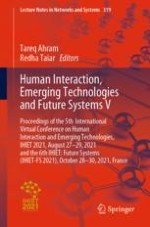2022 | OriginalPaper | Buchkapitel
Detecting a Coronavirus Through Breathing Using 3D Modeling and Artificial Intelligence
verfasst von : Haissam El-Aawar
Erschienen in: Human Interaction, Emerging Technologies and Future Systems V
Aktivieren Sie unsere intelligente Suche, um passende Fachinhalte oder Patente zu finden.
Wählen Sie Textabschnitte aus um mit Künstlicher Intelligenz passenden Patente zu finden. powered by
Markieren Sie Textabschnitte, um KI-gestützt weitere passende Inhalte zu finden. powered by
